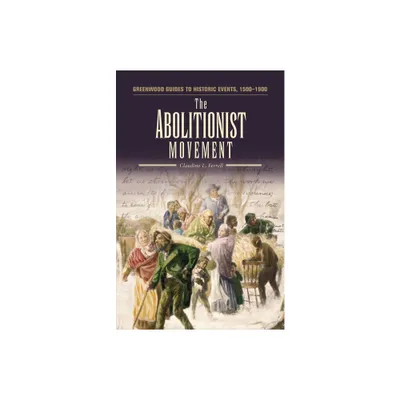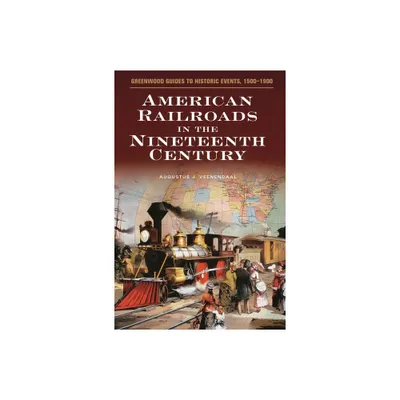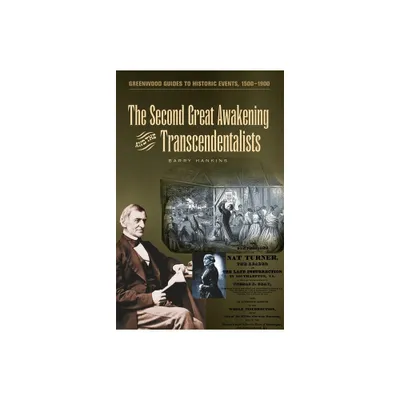Home
The Abolutionist Movement (Greenwood Guides to Historic Events, 1500-1900)
Loading Inventory...
Barnes and Noble
The Abolutionist Movement (Greenwood Guides to Historic Events, 1500-1900)
Current price: $57.00


Barnes and Noble
The Abolutionist Movement (Greenwood Guides to Historic Events, 1500-1900)
Current price: $57.00
Loading Inventory...
Size: OS
*Product Information may vary - to confirm product availability, pricing, and additional information please contact Barnes and Noble
The abolitionists of the 1830s-1850s risked physical harm and social alienation as a result of their refusal to ignore what they considered a national sin, contrary to the ideals upon which America was founded. Derived from the moral accountability called for by the Great Awakening and the Quaker religion, the abolitionist movement demanded not just the gradual dismantling of the system or a mandated political end to slavery, but an end to prejudice in the hearts of the American people. Primary documents, illustrations and biographical sketches of notable figures illuminate the conflicted struggle to end slavery in America.
Some called them fanatics; others called them liberators and saints. Immeasurable though their ultimate impact may have been, the abolitionists of the 1830s-1850s risked physical harm and social alienation as a result of their refusal to ignore what they considered a national sin, contrary to the ideals upon which America was founded. Derived from the moral accountability called for by the Great Awakening and the Quaker religion, the abolitionist movement demanded not just the gradual dismantling of the system or a mandated political end to slavery, but an end to prejudice in the hearts of the American people. Claudine Farrell's concluding essay draws parallels between the abolitionists' struggles and the Civil Rights movement of the 1950s-1970s, demonstrating the significant amount of ground being gained in a still-unfinished war.
Five narrative chapters explore the abolitionist movement's religious beginnings, the conflict between moral justice and union preservation, and the revolts, divisions and conflicts leading up to the Civil War. Biographical portraits of such notable figures as Frederick Douglass, William Lloyd Garrison, and the Grimke sisters supplement the discussion, and selections from some of the most influential documents in American history—including the Emancipation Proclamation, the US Constitution, and
The Writings of Thomas Jefferson
—provide actual historical evidence of the events. Twelve illustrations, a chronology, index and extensive annotated bibliography make this an ideal starting point for students looking to understand the battle for and against slavery in America.
Some called them fanatics; others called them liberators and saints. Immeasurable though their ultimate impact may have been, the abolitionists of the 1830s-1850s risked physical harm and social alienation as a result of their refusal to ignore what they considered a national sin, contrary to the ideals upon which America was founded. Derived from the moral accountability called for by the Great Awakening and the Quaker religion, the abolitionist movement demanded not just the gradual dismantling of the system or a mandated political end to slavery, but an end to prejudice in the hearts of the American people. Claudine Farrell's concluding essay draws parallels between the abolitionists' struggles and the Civil Rights movement of the 1950s-1970s, demonstrating the significant amount of ground being gained in a still-unfinished war.
Five narrative chapters explore the abolitionist movement's religious beginnings, the conflict between moral justice and union preservation, and the revolts, divisions and conflicts leading up to the Civil War. Biographical portraits of such notable figures as Frederick Douglass, William Lloyd Garrison, and the Grimke sisters supplement the discussion, and selections from some of the most influential documents in American history—including the Emancipation Proclamation, the US Constitution, and
The Writings of Thomas Jefferson
—provide actual historical evidence of the events. Twelve illustrations, a chronology, index and extensive annotated bibliography make this an ideal starting point for students looking to understand the battle for and against slavery in America.


















